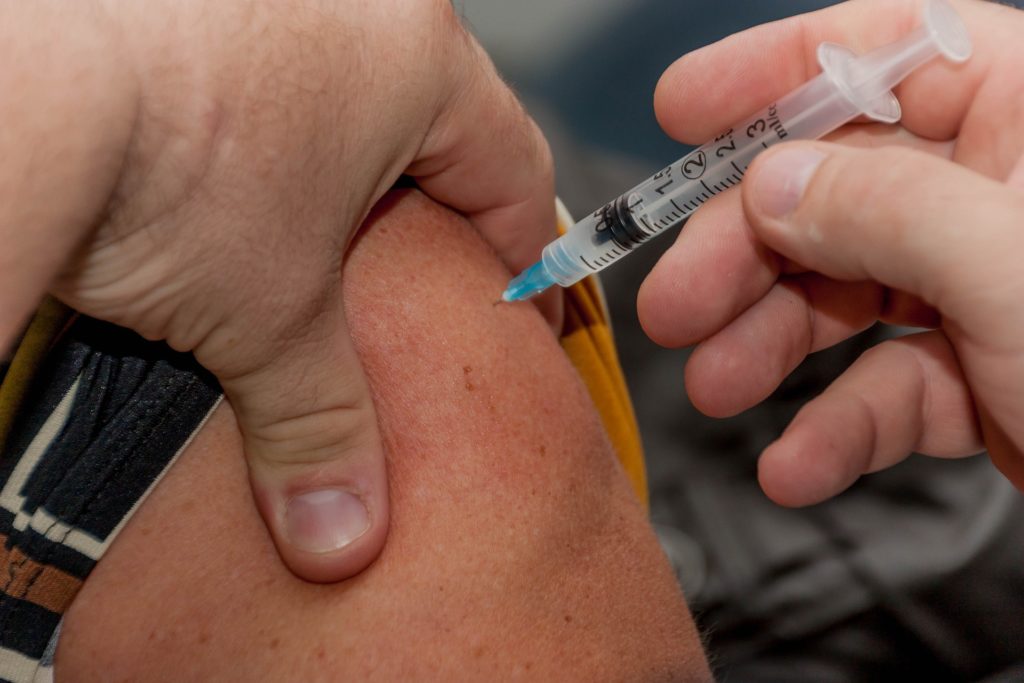Keep your distance, observe hygiene rules, wear a mask: thanks to the comprehensive coronavirus measures of the last two years, influenza has hardly been an issue. However, this could change this fall thanks to the easing of restrictions. Experts fear the return of a flu epidemic in Germany this year. And that means a high additional health risk, especially for vulnerable groups. You can find out all about the flu, the current situation in Germany and how best to protect yourself and others here.
Influenza: the seasonal infectious disease
A dry cough, high fever and severe headaches and aching limbs: these are the classic symptoms of influenza. In contrast to simple colds - caused by rhinoviruses, for example - influenza affects the whole body. The symptoms usually come on quickly and severely. They usually subside significantly within a week.
Influenza viruses are spread worldwide, as the Federal Ministry of Health informs on its website about influenza. In the past, the flu season in Germany took place in the winter months. According to the Robert Koch Institute (RKI), this is usually between the 40th calendar week (early October) and the 20th calendar week (mid-May).
Transmission occurs via droplet infection, i.e. through droplets when coughing, sneezing or speaking. The risk of infection is particularly high in areas with large numbers of people.

The duration and severity of an illness depends on the physical condition, the characteristics of the pathogen and the immune response of the person concerned, explains the Ministry of Health. This means that vulnerable groups in particular are at a higher health risk. "The elderly, pregnant women and people with a chronic underlying illness have a higher risk of severe courses of flu," summarizes the Ministry of Health. These groups in particular should therefore consult a doctor if they fall ill. There is even a risk of death in some cases and there has always been an increase in fatalities during the flu season.
Influenza A and B - different subtypes
There are four different subtypes of influenza. These have had different effects on past waves of influenza.
Influenza A (H1N1), also known as swine flu, was first detected in 2019 and has occurred seasonally in Germany since then. According to the RKI, influenza A (H3N2) has in turn affected older people in particular in the past, for example in the 2016/17 season. Excess mortality was observed in these seasons in particular.
Influenza B viruses are responsible for a longer flu epidemic due to later circulation. There are two different lineages: The Yagamata lineage and the Victoria lineage. While the Yagamata lineage causes more people aged 35 and over to fall ill, for example in the 2017/18 season, the Victoria lineage tends to affect older children (aged 14 and over). Since the start of the coronavirus pandemic, only a few infections with the Yagamata lineage have been detected worldwide; the Victoria lineage dominates among the B types.

Flu seasons during the pandemic
During the last two years, i.e. the time of the coronavirus pandemic, the number of influenza infections fell noticeably. Thanks to the lockdown and school closures in spring 2019/2020 and fall/winter 2020/2021, the flu epidemics ended abruptly and only a few cases were detected. Even in the 2021/2022 season, only a few infections were initially detected. However, according to the RKI, the number of cases rose again from the end of April 2022 after the majority of COVID measures were lifted.
Fortunately, the number of influenza infections has fallen in the past two pandemic years. But that could now change.
RKI reports increase in respiratory infections - Is the flu wave on the horizon?
The World Health Organization (WHO) currently states that the number of infections in Europe is at a higher seasonal level, with influenza A (H3N2) in particular dominating.
Since the start of this year's flu season, the RKI's Influenza Working Group has recorded an increase in the number of acute respiratory illnesses (ARE) - significantly higher than in previous pandemic years.
In the report for week 39, the Influenza Working Group notes a significant increase in infections with rhinoviruses, SARS-CoV-2, parainfluenza, influenza, respiratory syncytial virus (RSV) and human seasonal coronaviruses (hCoV). The working group comments: "The exceptionally high ARE activity for this time of year is due to the co-circulation of various respiratory pathogens, including mainly rhinoviruses, but also SARS-CoV-2 and parainfluenza viruses. Influenza viruses and RSV are also increasingly being detected." Compared to the previous week's report, the number of infections has risen significantly. In addition, an increase in Covid-19 infections was mentioned again in week 38 .
The increase - in the direction of a possible flu epidemic alongside the coronavirus pandemic - is worrying politicians and experts. With regard to influenza, there are additional factors, including low vaccination rates and immunization coverage rates, as the flu seasons of previous pandemic years saw greatly reduced infection rates.
This makes it all the more important to protect yourself and particularly vulnerable groups during this time. But what is the best way to do this?
What is the best way to protect yourself against the flu?

In addition to the coronavirus booster vaccination, the RKI, the Standing Committee on Vaccination (STIKO) and the Federal Ministry of Health also recommend the flu vaccination. Vaccination is particularly recommended for vulnerable groups, i.e. older people, pregnant women and people with chronic illnesses. However, vaccination is also recommended for medical and nursing staff. It is considered proven protection against infection. It is also helpful to follow the well-known AHA+L rules (keep your distance, observe hygiene rules, wear a mask, ventilate). As a precaution, people with symptoms of the disease should stay away from members of vulnerable groups.
However, if symptoms of the disease do occur, an infection can be easily detected with a rapid test. And not just a corona infection. A combined test can detect infections with SARS-CoV-2 as well as influenza A and B. The result is obtained after just 15 minutes - and depending on the outcome, appropriate treatment measures can be initiated. At parahealth, these tests are available cheaply and quickly, either as a professional or lay test.
Shop online at parahealth
The professional combination test from Reach Diagnostic is available from parahealth for €1.75 per test, and the amateur combination test from Safecare for €2.09 per test. Find out more about the professional combination test here. Order online now and save money. We offer fast delivery, top quality and good customer service. Thanks to these tests, you can contribute to more protection and faster and more targeted treatment.

